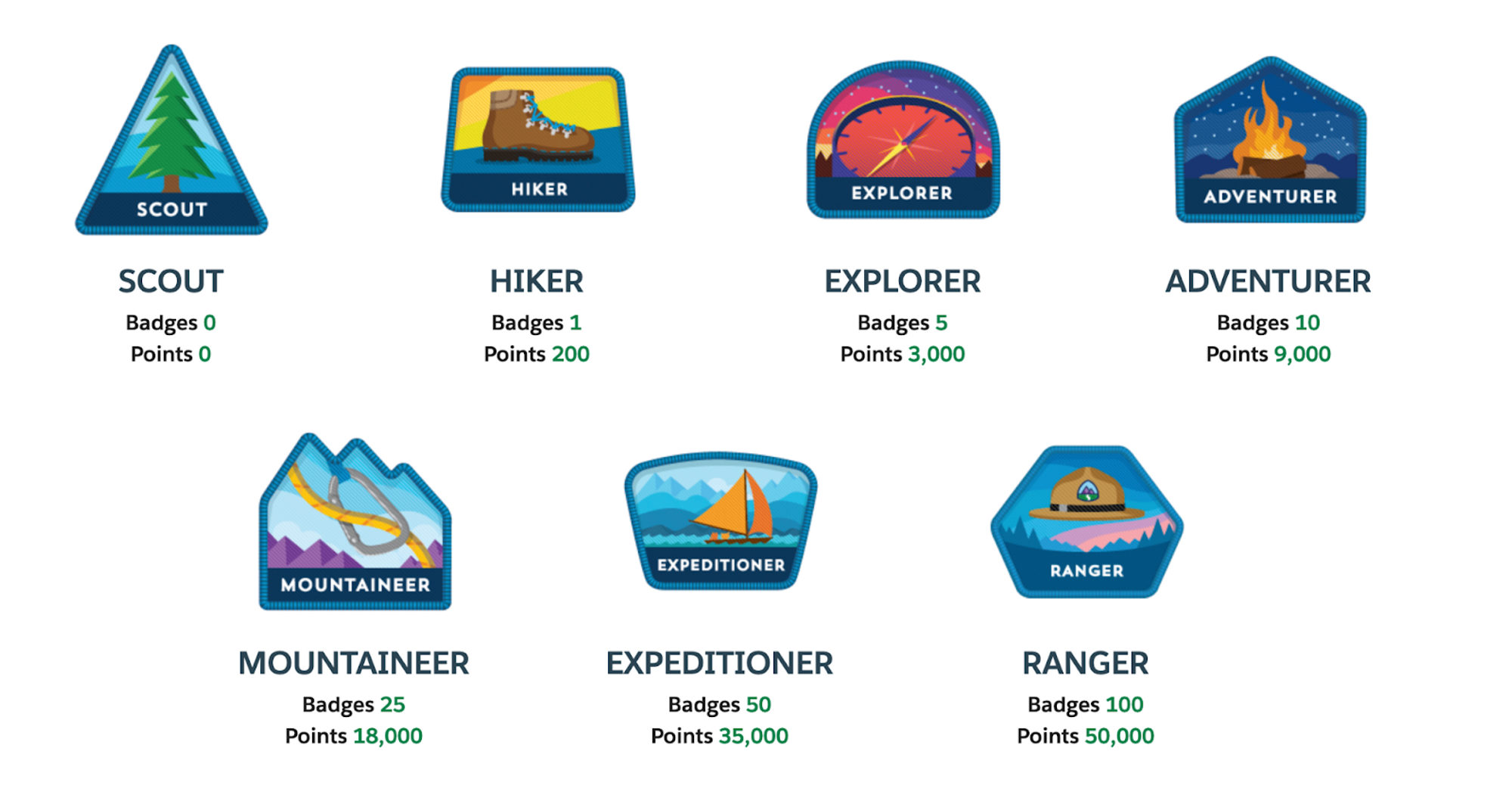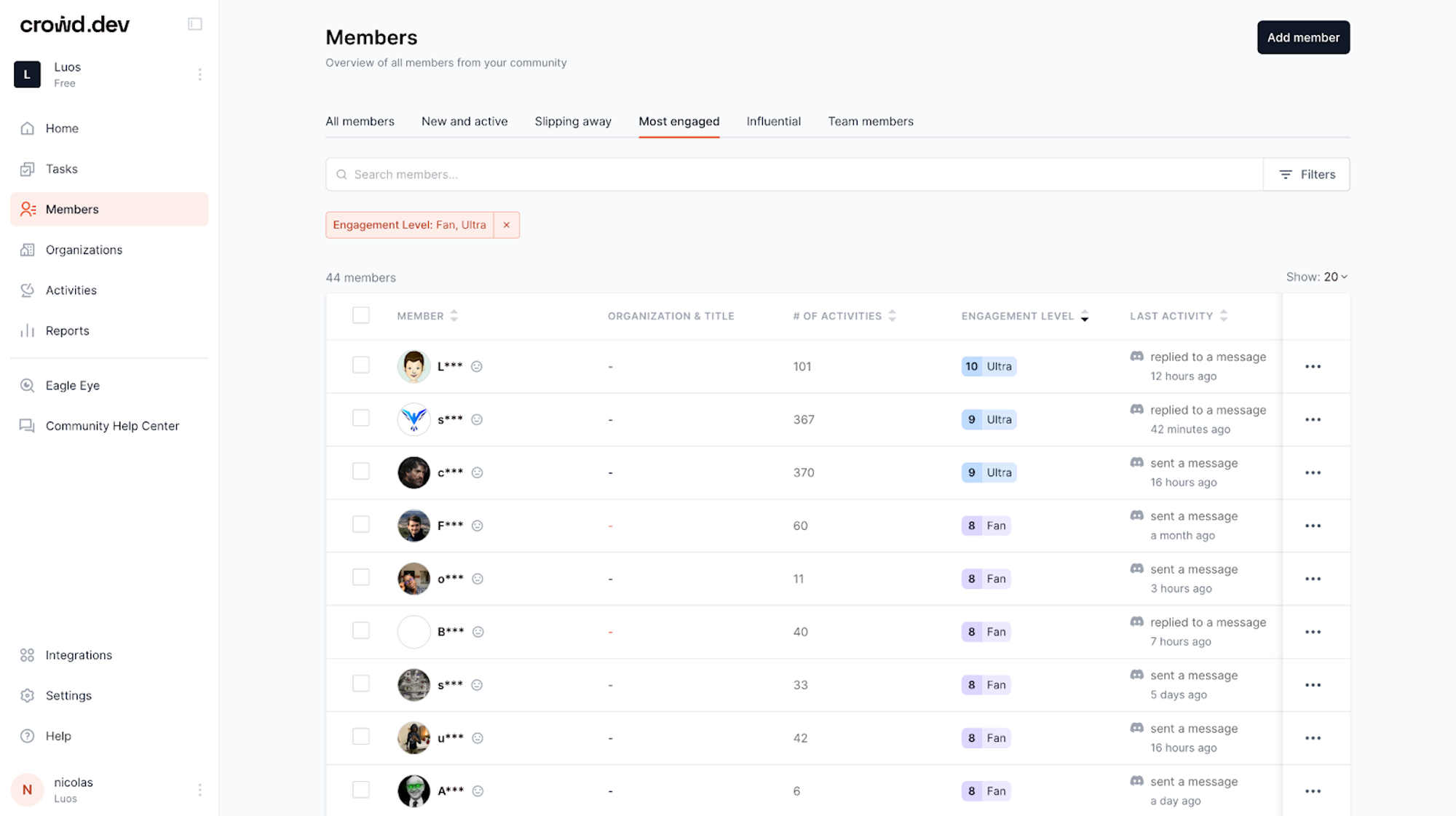We see that the community economy is becoming increasingly important in long-term winning strategies. While some will talk about marketing to a target/audience, others will talk about members and active contributors.
Through this article, we will present the path the Luos team took to develop a community of thousands of developers and give you some advice from our experience and testing. Our Discord community started less than a year ago is now over 11,000 members – and doubled in the past two months.
This article has been realized in collaboration with crowd.dev which will present the tools to implement to allow you to improve your community and analyze its performance.
How we launched our community
Why do we need a community and a place for it?
The Luos open-source project is about an innovative technology for the embedded and edge domain. It involves a new approach to development in order to facilitate the life and work of developers in the long term, allowing them to reuse the code developed between several projects and many other tools. This project requires a change of vision in the way of developing and thinking about a project. To change this vision with developers we need to be as close as possible to them to understand their expectations, their problems and work together to solve as many problems as possible. The community is an excellent way to keep a close eye on the needs of these users.
Beyond the analysis of needs, it also serves the purpose of networking and monitoring, since the world of development is vast and international, and feeding off different exchanges, projects and ways of thinking is a great source of information.
All this research into user feedback also serves an essential objective that lies in the very nature of the project, open-source collaboration. Building a community of developers means surrounding yourself with skills from all over the world in order to collaborate together to improve the common project. Many developers thus become actors of the idea's own success and improve it according to their needs.
Why did we decide to choose Discord?
Community members, our contacts, and our families (joke) often ask us why we chose Discord over Slack or a forum.
We quickly realized that the very nature of forums could limit the flexibility of our community and its exchanges. Moreover, hosting our community on a forum requires creating a new account and login that can multiply the tools, access, and complexity. In contrast, in our case, a developer only wants to exchange as easily as possible.
The choice of the forum was therefore eliminated after months of testing. Following this, we chose to test the two most popular instant messaging tools, Discord, and Slack.
During these tests, we observed a much larger and faster community growth on Discord than on Slack.
This difference can be explained by many factors that we won't go into here, but it lies in the following:
- The ease of connecting to a Discord server rather than Slack: one connects to a discord server with the same unique account without having to recreate an account as on Slack;
- Searching discord servers is easier than on Slack, where new members depend on an invitation link.
In addition to comparing solutions from a functional point of view, one of the main pieces of advice we would make is to know as much as possible about your audience.
Identify some personas, and understand their content consumption habits, desires, assets, and especially what kind of tools they use.
To better understand all these, we contacted hundreds of developers through Linkedin and tried to identify which tools they preferred. Discord came out on top.
Instant messaging, okay but Is your audience used to consult and exchange on only-chat applications?
An instant messenger is a choice to be studied and not decided hastily. We all see the example of an endless WhatsApp conversation where you are 90 notifications behind.
Does your audience regularly log into a messaging application to write messages and read the content? Are they able to respond and self-regulate according to their availability?
There is a global shift in the way information is exchanged. For many people, being in a chain of emails is no longer an option, and they need to respond in a way similar to a forum.
The emergence of messaging software proves this change in communication/exchanging information.
This connection must be accessible at intervals for the participants who are otherwise focused on a project, employees working during the day, students in class, etc. Therefore, the objective for you is to find ways to bring value to your community and encourage the members to come back and connect. Discord allows you to measure your members' commitment by showing the percentage of members consulting your server every week, month, etc.
How do we move the early community to Discord?
One of the effects that we observed before the opening of our community on Discord is that there were many users exchanging or talking about Luos on different platforms (forums, websites, social networks such as Reddit, comments under an article, Slack or Discord communities etc.). It was often difficult for us to maintain a link with these users and to provide them with a quick response to the embedded projects they wanted to develop or the problems they encountered.
It is often known that it can be difficult to talk directly to the people behind an open-source project, which for the most part leaves you without assistance or help if you have a problem. This is exactly what we wanted to avoid. So we made the choice to invite all these micro-communities to form a single community on Discord.
How did we acquire more members?
To know your audience better, you must know the platforms they consult. Because even if you have the most beautiful Discord server, if no one knows it exists, you will have trouble building your community. So, we did a lot of research to identify the platforms that developers mostly use in the embedded domain for our case.
We identified Reddit, Twitter, Hacker News, and Quora as interesting platforms on which we should create content, interact with qualified people, and possibly advertise.
We present these channels to help you in your community launch phases. The goal will be to work with this community to grow organically and through the quality/reputation of the exchanges offered within the Discord server without you having to promote it directly.
Today, we have seven great acquisition channels that allow us to grow our community:
- Connections with other technologies
- Our Luos technology is connected to other technologies that allow it to run/manage particular tasks, such as C and Python. Many communities exist regarding these technologies and can be channels of acquisition and interest.
- Integrations with other partners
- Luos works with many brands of embedded boards, and this leverage is a good way to get the brand and community known to users of the technology in question.
- Press articles
- We have relationships with many influential media outlets that we have identified as platforms consulted by our audience. Beyond gaining members to our community, the authority of the press domain (DA) also serves our SEO as it generates qualitative backlinks.
- Creation of webinars and live events
- A good channel for acquiring qualified members since it highlights issues and themes of high interest to your audience.
- SEO
- Creation of content for our website, blog, documentation, and tutorials that allow us to be indexed on search engines and thus attract other members to our community.
- Outbound
- Outbound campaigns running on Linkedin, which is based on an audience of embedded developers created in Sales Navigator. Sending messages through the Linkedin messaging system. Good performance and response rate to written scenarios.
- The ads
- Twitter Ads tested for several months and are still active to this day. Interesting CPC, only sometimes offers qualified people. The advantage is that it is easy to create ads, and the audience is more used to this format.
- Reddit Ads tested for several months, then stopped. Interesting CPC and very qualified people. With the disadvantage that part of the audience hates ads.
- Linkedin Ads tested for several weeks, then stopped. Very high CPC for a qualified audience.
Some tips to build your community and ensure a frictionless onboarding
Be honest, clear, and authentic
Few companies or projects consider building a community a priority goal, according to the start-up ecosystem.
Many would be tempted to see their community as an unlimited prospect base where aggressive and meaningless marketing can be applied. But if there is one piece of advice we can give, it's to be clear about what the community will do for you and your members.
You should not hide who you are if you are a company, and you should explain your business plan and how you will make money. In our case, we make it clear that our open-source project, the Luos technology, will remain free and that we will develop additional tools that will be paid, similar to what Github does. This clarity and transparency are essential.
Giving the keys to certain members to allow them to become contributors/important actors of the community and possible collaborators in the company is a good way to foster the relationship that a company can have with its community. With the open-source objective being commendable and shared in philosophy, the pyramidal and organized aspects will be erased.
Looking for contributors is not trivial. Developers are familiar with the methods related to open-source and understand the stakes involved.
They are bringing their knowledge, expertise, and vision to your project, which will grow.
For them, the joy of working on a motivating project will perhaps one day allow the emergence of a vision shared by the company that will last over time—the feeling of having contributed to the building of the Linux project.
Be very present in the beginning
Once you have acquired members and explained the nature of your project, it is imperative to dedicate significant time to sharing and creating conversations. It can often be intimidating for a newcomer to speak in front of 11,000 members (imagine yourself with a microphone in the middle of a stadium). So consider channels to allow people to introduce themselves and start a conversation on their profile. Relay information related to your project or domain (without talking about your project all the time), create messages with questions that interest your community, set up actions to allow your members to engage. Over time, the community will live on its own with these members and proclaimed moderators without you needing to always be connected.
Be inspired: involve the most active members and reward them for their contributions
When you identify members with high potential in their technical skills and ability to help others, it is your turn to accompany and help them. Offer programs or benefits that only they will have. Whether they are contributors to your open-source project or play some other important role, these members of your community can be offered privileged access to support from the technical team and assistance on their personal or professional projects.
Whatever the tool, here are some tips put in place to increase the engagement of your members:
- At Luos, we set up monthly contests allowing member interaction and participation. Sometimes a referral contest is where members who invite the newest people are on the podium each week. Sometimes a technology contest to launch a project.
- We share a technology article from our embedded/edge development watch and a short text describing the content daily. All members can share the result of their watch, like a colleague who advises you on the latest trendy article.
- Add an automated thank you channel in your community so that each member can congratulate another for their help. Each week, you can share a weekly list of congratulations.
Suppose you already have a visual identity that allows you to create virtual badges or recognition. In that case, you can gamify each action/accomplishment with a visual/virtual element that their owner can display and collect.
Based on experience, interaction, and level, develop roles in your community to recognize your members' investment.
Within your community, organize virtual events, contests/challenges that will appeal to the creative side of your members. Every week, ask a technical or general question to test knowledge and set up a ranking.
As an example of gamification, Salesforce Trailhead has understood this principle of gamification by making its platform fun and transforming learning into a journey to earn badges and sometimes goodies.

Test, evaluate and iterate
If other trading communities are doing it, there must be interest.
We realized that our onboarding path could have been more optimal. When people arrived on the server, they needed help figuring out what to do or how to navigate the channels. So we made a comparative study of different Discord servers to identify best practices and test them.
We:
- shortened our welcome message to be concise and precise about the objectives of our discord server
- removed the automatic messages from the discord bot that greeted people: "A new member has appeared on the discord" because it sent multiple notifications, disrupted the reading, and did not encourage people to introduce themselves.

Finally, we optimized our process for getting roles on the server by enforcing more precisely what they were used for. These tests proved to be successful as we evaluated an increase in members communicating on our discord server.
By testing methods and content on your server, you can also use tools like crowd.dev to measure the number of interactions on a topic. This will allow you to see what topics your community is interested in.
How did we analyze and improve our actions with crowd.dev
To support our community efforts and help us to understand our audience deeply, we use crowd.dev. It is an open-source suite of community and data tools that help you manage, analyze, and grow your developer community. We use the tool for several objectives; however, the two most important to us have been:
- To identify key opinion leaders and highly engaged community members to build authentic relationships.
- To understand what content to create to deliver value to our community members.
With our community now over the 11,000-member mark, it is difficult to monitor closely manually and identify which members are interesting for us to keep engaged. crowd.dev has taken away the complexity as we can connect our Discord and all our other community channels like Twitter, DEV, and Hacker News, and they aggregate and help us pull insights from our data.
To identify key opinion leaders and highly engaged members, we mainly use crowd.dev’s members' directory. It essentially lists all of the people in our community across channels. We can then instantly search, sort, and filter the list according to our needs. The tool automatically assigns all members an engagement score. We can also use it to add custom tags to our members and segment our community further.

From this list, we can then easily pick out the most engaged and influential members and dig into their member profiles in crowd.dev. In the member profiles, our team can see all the past activities of this member. This enables us to personalize our future communication with them accordingly. Instead of generic and marketing-driven messages, we can build relationships and be honest, clear, and authentic.
A central part of creating a valuable and engaged community is producing the right kind of content for them. crowd.dev has helped us stay on top and analyze all the activities in our community to identify topics of interest. In their activity page, we can search all past activities and past conversations and also filter according to topics. In community platforms, a huge problem is usually that retrieving past activities is a pain, and you lose valuable data over time. crowd.dev avoids this and helps us retrieve that data when needed, and in one place. We’ve been able to create much more interesting content for our community and make a database of topics we know work best.
Before using the tool, we had taken the approach to focus solely on SEO. We, at times, relied too heavily on what other sites were telling us about trending keywords in our space and also let our own opinions influence our content. Instead, with crowd.dev, we now focus on what our community is asking for and talking about when choosing what to produce, and this has been more effective.
Conclusion
With some of the actions we have listed so far and others you will see if you join our Discord, we have managed to keep the community growing by 50% every month.
Due to the popularity and commitment of our members, we are now working with our best members, called Helpers. These helpers are fully involved in the project. It is now up to us to involve them even more in the team. We hope that these few lines and this toolbox will help you develop a community that supports and contributes to your project. A few days ago we reached the 11,000 members mark, don't hesitate to contact us to share your successes as well!
To see all our tips in action, we invite you to join our Discord server.
Get started with Luos